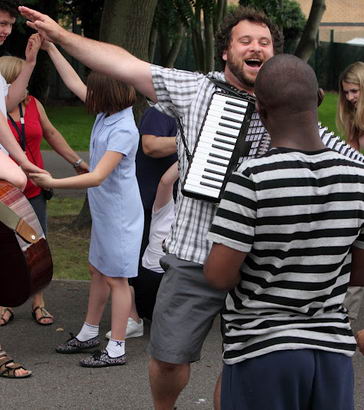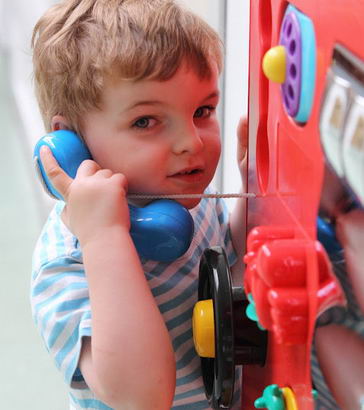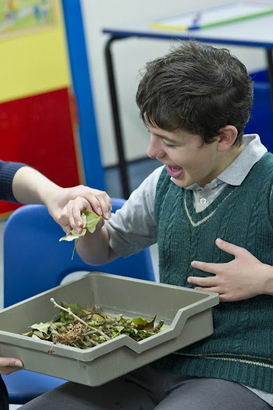
Play is critical to the development of children, as it provides them with opportunities for:
- Social interaction;
- Making sense of the world around them;
- Developing and using a variety of skills; and
- Thinking creatively and developing skills associated with making and understanding rules associated with play and play situations.
Extend your knowledge of play by exploring the following resources:
Read this document on Play and Developmental Stages from the Child Development Institute's website.
There are also quite a few interesting articles relating to play on the website of Community Playthings'.

- Age 1-2: Early pretence is typically tied to the actual actions associated with objects (eg drinking from an empty cup);
- Later pretence uses objects to stand for something (eg banana as a phone; a stick as a horse);
- In older children, more time is spent planning the pretence than acting it.
(Goswami and Bryant, 2007)
Although pretend play is largely thought of in terms of social development, it can also involve all other areas of development, eg:
- Language: in explaining and understanding pretend situations;
- A 'theory of mind': in understanding what others are thinking and why;
- Executive skills: planning and self-regulation.
(Goswami and Bryant, 2007)
In the clip entitled: Evan, Elias, Lyric and Itiah On the Bus, children take part in pretend play. At the time of writing, this clip appears ninth from the top of the clip list on this website.
In this clip, what evidence can you find for the areas that we have discussed on this page and the previous page?
'Theory of mind' allows a person to predict the behaviour of others based on their intentions and desires. Originally,
it was thought that this aspect develops in children at around four years of age. However, research has demonstrated that
children as young as two and a half demonstrate an emerging understanding (Wellman and
Phillips, 2000).
In developing a theory of mind, children observe and learn about:
- Kinds of events that lead to happiness or anger;
- Goal directed behaviour and intentions;
- Interest and intention by following the gaze
of others; - Joint attention with others;
- Social contingencies.
(Goswami and Bryant, 2007)

Through manipulating objects (eg sand and water or blocks), children can control how objects behave and create relationships between them.
From two years old, they begin to differentiate between reality and make-believe.
In late infancy, and as they begin to initiate play, children acquire lessons about both their physical and social worlds. Play offers natural opportunities for children to extend their imagination beyond what they know to imaginary problems and solutions. This enables them to develop new patterns of thinking.
As children begin to negotiate rules, relationships and roles, play becomes a bridge to higher level thinking.
(Evangelou et al, 2009)
In home settings, researchers found that the combination of play and parental support meant that children very often played
differently and did very different things when compared with their time
at nursery.
The child's play time, use of art and conversations with parents, tend to follow an unbroken thread which, in contrast to nursery, means that they have far greater freedom and confidence to explore using play time.
In the case of a particular three year old:
- A TV advert inspired him to draw a huge strawberry devouring a small boy;
- He explored scary scenarios with his mother, including the 'Never smile at a crocodile' song; this led to him
- Drawing the crocodile; before
- Acting out rowing away from a crocodile using a 'baby bath' boat with coat hangers for oars.
Interestingly, his preschool reported a lack of interest in drawing.
In light, the unique setting, the sophisticated one on one support and the real focus on freedom at play time, gave him far greater confidence to explore in a way that was markedly different from other settings.
(Evangelou et al, 2009)
Adults can be catalysts – drawing alongside children and listening and responding attentively to the children's explanations and stories of what they are drawing.
Evangelou et al, 2009
Play can be enriched by guiding, planning and resourcing.
Evangelou et al, 2009
Think of a child that you work with. See if you can establish the 'continuous thread of meaning' in activities that engage them. If appropriate, talk with the child or their parent.
Draw up a plan for how you might facilitate further exploration and learning based on this thread.
How will you remain aware of the child's changing interests?

Department of Children, Schools and Families (2009) Learning, Playing and Interacting: Good practice in the Early Years Foundation Stage. Annesley: DCSF Publications.
Evangelou, M., Sylva, K. and Kyriacou, M., Wild, M. and Glenny, G. (2009) Early Years Learning and Development: Literature Review. Annesley: DCSF Publications (accessed 12.1.12).
Goswami, U. and Bryant, P. (2007) Children's Cognitive Development and Learning. London: Esmée Fairbairn Foundation/University of Cambridge (accessed 12.1.12).
Wellman, H.M. and Phillips, A.T. (2000) Young children's understanding of perception, desire and emotion, Child Development, 71 (4), 895-912.

The Open University's Learning Space contains some excellent guidance on: The role of play in children's learning.